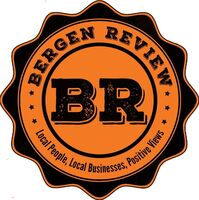|
You might be surprised at what's preventing you from having the success you desire.
As an expert in helping people be who they are and build the habits that are critical for success, I can confidently say that, most times, people aren’t even aware of what’s truly holding them back. You may think you’re doing everything you possibly can, but sometimes, it takes slowing down and practicing deep mindfulness and self-awareness—like many of us are doing as we reflect on the past year and plan for the one ahead—to see your blind spots. If you’re trying to figure out what yours are, the list below is a great first step. Here are nine surprising things that may be thwarting you from achieving the success you desire. 1. You’re Following Someone Else’s Definition Of Success This means you’re comparing your performance to someone else’s (or society’s) timeline and goals, which will just lead to an inaccurate assessment. Create your own definition of success. Once you do, it should be the only one you pay attention to. 2. Due To A Lack Of Inner Work, A Lot Of Your Behaviors Don’t Align With Who You Really Want To Be In our culture, we’ve been taught to seek therapy or coaching only when something’s wrong. But I strongly believe that you should do these things even when, on the surface, life seems fine. Understanding who you are and your psychology is essential for success and optimizing your potential. Without understanding what’s going on inside your mind, you become a victim of the wiring you received from your family of origin. Their beliefs and “rules” are driving your decisions, and they shouldn’t be because you’ll probably end up acting in a way that isn’t in line with the person you want to be. No matter your goals, you must be aware of your unconscious behaviors in order to achieve them. If you don’t have a therapist or coach right at this moment, you can start to build self-awareness by first slowing down and starting to notice moments where you’re either really happy or really not. What is the mental chatter that’s swirling around in your head? Start to pay attention to these messages. This can be a powerful way to begin the process of understanding what internal messages are driving certain behaviors. 3. You’re Adhering To Outdated Social Norms You need to get a college degree to be successful. Benefits and pay are more important than how the job makes you feel. Job hopping is bad—really bad! These are all old rules that no longer apply to the modern business world. If you’re following them (or any of these), you’re short-changing yourself big time. You can—and should—break these rules if it’s right for you. 4. You Aren’t Connected To Your Truth Most people haven’t been taught how important our own instincts are for decisions and career planning. But they’re essential. Success should be a reflection of each unique individual. That means you need to be in the driver’s seat—and your true feelings, your true wants and needs, should be steering the car. 5. You Often End Up In Jobs That Just Aren’t A Good Fit To find positions (and companies) that you’ll enjoy and thrive in, knowing your Zone of Genius is key. This is made up of your Purpose, which is the impact you want to make on the world, and your Genius, which is the way of thinking or problem-solving that you do best. When you find a job that fulfills both of these, it’s absolute magic. If you want help discovering your Zone of Genius, take this quiz. It’ll give you access to intrinsic motivation and help you determine what challenges you intellectually. 6. You Followed Advice That Sounded Good But Felt Wrong No matter how much you revere the other person, at the end of the day, their advice is simply what worked well for them. That doesn’t mean it’ll work well for you. Listen to each recommendation with a critical filter. If it feels like it’s right for your situation, do it! If it doesn’t, put it in a metaphorical box and save it for later, or discard it completely. 7. You Stay Stuck In Your Comfort Zone Because You’re Afraid To Fail Failures are a great gift! Don’t live in fear of them. Instead, view them as the ultimate way to learn and grow. If you’re holding yourself back because you’re nervous about messing up, you’ll never go far. Failures are an integral part of every great success story. So, take the leap. If you fall, get up, figure out why, make the appropriate adjustments, and try again. 8. You Have A Scarcity Mindset When It Comes To Money (Or You Truly Don’t Have A Financial Cushion That’ll Allow You To Take A Career Risk) Being able to support yourself (and your family) is important—and it’s a huge component of work. Oftentimes, though, your financial health is more related to your mindset than your financial reality. When deciding whether or not to take a risk in your career, it’s crucial to know how much money you really need. That means figuring out items and services you could do without, at least for now. The thing is, you’re more likely to achieve your money goals if you’re in a job that intrinsically motivates you. If you have a high-paying job that you hate, your bank account might look exactly how you want it to, but it won’t matter—because you’ll be miserable. If you don’t have a safety net, start building one now. Because even if you don’t want to leave your current job, you truly never know what could happen. Bottom line: your financial health is a critical partner to career success. 9. You Lack Confidence Believing in yourself, no matter what happens or what other people think about you, is a non-negotiable. If you’re struggling with confidence and can’t seem to build it on your own, I highly suggest seeking out the services of a coach or a therapist. This is a problem that’s entirely fixable with the right support. Contributed by: Laura Garnett Performance strategist, Mother, TEDx speaker, and author of, Find Your Zone of Genius. she works with CEOs and executives to identify their unique genius and purpose and craft an actionable plan to leverage them in their day-to-day work. She has consulted with organizations including OpenTable, Google, Linkedin, and Pandora. Prior to launching her company Garnett Consulting, She honed her marketing, branding and career-refining skills at companies like Capital One, American Express, IAC, and Google
0 Comments
The aptly named Garden State has designated slightly more than 20% or about 2 of every 10 acres for parks and wildlife. In Alaska, it is almost 40% or 4 of every 10 acres for a total of 144 million acres of parks. The research, conducted by a team from CLIQ Chairs, a company that manufactures chairs designed for outdoor use, shows New Jersey has set aside 945,000 of its 4.7 million acres to parks. Coincidentally, this month, New Jersey celebrates the 60th anniversary of the first Green Acres bond act "that has led to the preservation of some 1.6 million acres in the nation’s most densely populated state," said Department of Environmental Protection acting Commissioner Shawn LaTourette. Green shows park areas in New Jersey. "New Jersey residents can take special pride in this because they have consistently supported bond acts over the years that have funded expansions of state parks and forests, preservation of wildlife management areas and farmland, creation of parks and recreation opportunities in cities and towns across the state, and so much more," said LaTourette. New Jersey's goal, LaTourette said, "is to provide something for everyone like high-quality parks in every neighborhood, so people can take a short walk to a green space where they can relax, recharge, and play." That effort, he said is not at the expense of efforts to preserve forests, wetlands and other natural areas "to ensure a healthy diversity of wildlife and plants, especially focusing on connectivity of these important habitats."
That research put Alaska at the top of recreation value added per capita at nearly $3,000 per resident. New Jersey had $1,320 in recreation value added per capita, but its population base is about 12 times more than Alaska. As part of its research, CLIQ found a "dramatic" increase in efforts to protect land across the country. In 1959, when Alaska and Hawaii "were admitted to the Union," rural parks and wildlife areas totaled around 46 million acres in the U.S. By 2012, that number was more than 253 million acres, the report stated. Of course, in 1980 federal legislation effectively doubled the amount of federal parks and wildlife area with its designation of more than 157 million acres of land in Alaska. In New Jersey, the Green Acres program provides state money to municipal and county governments to purchase land for perpetual protection. In most cases, the local money is raised by a voter-approved tax on property. The CLIQ report also focused on the economic value of outdoor recreation, which topped $400 billion in 2019, the year before the COVID-19 pandemic. Last year, as indoor venues were closed, there was a noted increase in attendance at outdoor venues, such as parks, hiking/biking trails and water sports such as kayaking. There is no accurate estimate of visitors to the state park system since parts or all of many parks are free to enter. As an example, Kittatinny Valley State Park oversees a network of bike/hike trails on old railroad beds in Sussex County where there are many access points. Lake Hopatcong is a state-owned park, but there are many private and public boat launch areas around the lake, similar to Swartswood Lake which has a pay-to-swim beach but many trails which where access is not monitored. At the 70,000-acre Delaware Water Gap National Recreation Area, which straddles the Delaware River, officials said the park was the 10th most-visited national park unit in the country in 2020 with 4.1 million visits recorded. Since the entire park is free to access, those visits are calculated by automated vehicle counts on some of the park's roadways, and attendant counts at various parking areas. Spokespeople for the state DEP and the recreation area said they expected visitor counts to remain high this summer, even as the pandemic appears to be waning and many commercial venues reopen to the public.
There are 51 state parks in the Garden State, according to the state's DEP site, which offers details on each. The largest of the parks, Wawayanda State Park, established in 1960 in Sussex County, has 32,524 acres. The smallest, with 32 acres is the Barnegat Lighthouse State Park in Ocean County, established in 1951. The newest of the state parks, established in 2015, is the Tall Pines in Gloucester County and the oldest, established in 1777 is the Princeton Battlefield State Park in Mercer County. Is The “Tinder-fication” Of Online Dating Over? S’More Thinks So, And Has The Data To Back It Up12/8/2021 New data gathered by the dating app company S’More suggests that their unique approach to online dating — one that puts chemistry ahead of “hotness” and relationships over casual encounters — may become the new norm in online dating, and some of the biggest players in the industry are getting in on the trend.
Surveying 1000 representative American dating app users, ages 18-50, in December of 2020, they found physical attraction was no longer rated as the most important factor when searching for a potential match. “We compared the results of our most recent survey to one we conducted in March of 2020, at the very beginning of the pandemic,” says Adam Cohen-Aslatei, CEO of S’More. “We found that the top two drivers of online dating behavior — physical attraction and location — had been supplanted by the need for compatibility and chemistry. Sexual connection also dropped in importance from March to December.” The team at S’More believes these results reflect a growing need among dating app users for a more authentic and “anti-superficial” dating experience. “Covid-19 certainly changed the equation,” says Cohen-Aslatei. “But beyond that, our data shows that people are starting to expect more from dating apps. They want real connections, not the fake photos and hyper-sexualization that has characterized so much of online dating over the past decade.” This isn’t the only data that highlights the disconnect between the promise of online dating and reality. Studies have shown, for instance, that online dating can take a toll on users’ mental health, causing increases in depression and anxiety and decreases in self-esteem. One recent Pew Research study found that more people believe online dating has had a negative impact on dating and relationships than a positive one, and that people still think relationships that start in person are more likely to succeed than those that start online. “Love seekers are frustrated,” says Cohen-Aslatei. “They are frustrated with the bad experiences they have had on dating apps. They are frustrated that these apps are somehow making it harder to find a romantic connection. You cannot filter your way into a perfect relationship. That takes real effort. And, perhaps most of all, they are frustrated with the image-obsessed nature of online dating. Most dating apps force us to make decisions based on little more than a headshot. While that may work for casual encounters, instant judgment, and gratification, it does not work for long-term relationships.” To address these concerns, S’More has developed a suite of features aimed to reduce the superficiality of online dating, and slow down the process. For one, users aren’t able to view a clear photo of a potential match until they have had a meaningful conversation with that person. “Our chat-to-unblur feature, the first of its kind in the marketplace, encourages people to get to know more about a person before making a dating decision,” says Cohen-Aslatei. “On most swiping apps, we make decisions in under three seconds without considering anything about the person but a headshot. And let’s face it, there is a 50% chance the photo is outdated, overly airbrushed, or fake.” S’More provides its users with 100% profile customization via drag-and-drop technology, cover photos, custom icons, audio voice responses (its most popular feature), and music. S’More verifies its users’ profiles to reduce instances of catfishing and other bad-faith actions, gives users a behavior score to encourage positive activity, and they are integrating with Amazon’s new AI “Rekognition” technology to further protect its community. Moreover, the team recently launched S'MoreTV, a celebrity video service that connects daters based on similar content interests. S’More is not alone in its effort to create a more anti-superficial dating experience; other dating apps are tuning into the trend. Tinder and Bumble recently added games to their video product, MeetMe added blurred video dating, and Chispa, a Match Group app for Latino and Latina singles, connects daters based on answers to trivia games. MuzMatch, a Muslim-focused dating app, also lets women keep their profiles blurred from men. “These features are more fun, lead to better retention, and actually spark more conversations leading to potentially more relationships,” says Cohen-Aslatei. While these initiatives may lead to better outcomes, it remains to be seen just how many users will adopt them. Research has shown that physical attractiveness is still the biggest predictor of decisions on dating apps and that judgments are often made in fractions of a second. But there is reason for hope. When S’More asked its survey takers what they would do differently on dating apps in 2021, the top three responses were: (1) be more authentic, (2) treat people more respectfully, and (3) try not to pass judgment too quickly. Other research suggests that the pitch of one’s voice can serve as a cue to attractiveness that is on par with looks. And, a recent analysis on the predictors of a healthy relationship found that commitment and appreciation mattered more to the quality of one’s relationship than sexual satisfaction. “While some dating app users will be reluctant to move away from the superficial aspects of online dating, others will embrace them,” says Cohen-Aslatei. “One thing I’ve learned over the past 10 years working in this space is not to underestimate this market’s appetite for innovation.” S’more was founded by a former Bumble executive and is venture-backed. It is currently live in six U.S. cities. Article by Mark Travers, Ph.D. Mark Travers, Ph.D., is an American psychologist with degrees from Cornell University and the University of Colorado Boulder. |
Written, Compiled & Edited byThe Bergen Review Media Team
�
Archives
April 2024
Categories
All
|
|
Bergen Review Media is a
WebClientReach, llc Company |
50 East Ridgewood Ave. #215
Ridgewood, NJ 07050 Phone: (201) 948-5500 |
The Bergen Review is Bergen county's concierge for the best businesses, restaurants & venues in New Jersey. Our agency has a combined total of over 15 years experience in online media and marketing. Our team of experts scour every nook and cranny of New Jerseys best businesses, restaurants & venues to present to our clients the full scoop of where best deals & experiences are. Even after researching & looking at reviews, finding the REAL scoop on what Businesses, restaurants or venues best fit your interest can be a challenge. Bergen Review Media has a team that researches & visits various establishments. Making sure the consumer gets the best experience.
|
Website by Bergen Review Media








 RSS Feed
RSS Feed






